|
1/16/2024 One Crowded ClassroomAs mentioned in a recent blog post on the history of the East Acton school district, during the first decades of the nineteenth century, a one-room schoolhouse at the corner of today’s Great and Davis Roads served students from both North and East Acton. The result, especially in the winter months when farm work was not expected of older students, would have been crowding and a teacher with very little time for individual grades, much less individual students’ needs. Residents of East Acton campaigned for years to split the school. We recently came across a March 6, 1828 listing of all the students in what was then called the “East” School District. On it were the names and ages of 87 students, 48 “Masters” and 39 “Misses.” At a time when censuses listed only heads of household, this is a particularly useful document. In some cases, this is the only record we have found that shows a student’s presence in Acton. Given the age provided in the March 1828 list, some of the students were easy to find in the town’s published birth records. Some, because of a common name or an age that does not quite match dates in the records, were not so clear and needed to be followed up in other records. Baptisms were sometimes done well after birth, so the provided age was less helpful in identifying individuals in those records. In some cases, we could not find the students in any other Acton records, so we had to search farther afield and try to work back to an Acton connection.
Below is an annotated list of the 87 scholars in the March 1828 East Acton School with the results of our research into their identity. Overall, we found 42 whose name and age seem to match a person in Acton’s birth records and another seven whose age was somewhat off but who probably matched an Acton birth record. For 14 students, we found no birth record in Acton or elsewhere, but we did find a church/baptismal record in Acton that is probably the right person. (Some were baptisms done several years after birth, and some of those were born elsewhere). Research revealed five students whose later records reported an Acton birth, but there is no record of it at the time. We were able to find parents and a likely out-of-town birthplace for eight of the other students. The remaining eleven remain elusive. 10/23/2023 East Acton’s Wandering SchoolhousesPreparing for the Society’s latest exhibit on the history of Acton’s schools has led to a flurry of research into some of the lesser-documented schoolhouses in town. East Acton’s schools have been surprisingly challenging to pin down. East Acton was not consistently treated as a distinct school district. Its schoolhouses were used for a relatively short time and then sold off for other purposes, sometimes to be moved down the street or even out of town. In addition, some of our most helpful sources on school history were written by people from other parts of the town; East Acton school information has proved harder to verify. In Acton’s earliest years as a town, individuals were paid to keep a school, presumably in their own house or sometimes in a privately-built schoolhouse. During the 1740s-1760s, the town was divided into a varying number of school districts - first three, then six, then five, then six again. In 1771, the town decided to build (or buy) schoolhouses. One of the existing schoolhouses was on today’s Strawberry Hill Road, perhaps at about today’s #13. (Though that location has been suggested on a historical map from about 1890, so far, no early deed or map has been found to pinpoint the exact location. We only know that it was “near Solomon Burgess” who lived on the north side of Strawberry Hill Road past its intersection with today’s Esterbrook Road.) A vote in May 1795 affirmed (briefly) that this school was going to stay in service, although town meetings’ frequent reconsidering of school locations complicates the job of understanding school history. In the late 1790s, there was also a schoolhouse standing somewhere near the corner of Main Street and Harris St. that would have served North Acton. In November 1800, the town voted to pay Daniel Davis for building a new school at the corner of Great Road and what is now Davis Road. Unlike many reconsidered decisions, this vote apparently led to actual building, because in December 1800 the town debated how they would use the newly built schoolhouse. The issue was whether they would send students from the East and North districts to the new school on Great Road or keep the students in separate districts. They voted to combine the North and East school districts into the new schoolhouse and sell off the old schoolhouse on Strawberry Hill Road and the one around today’s Harris St. The schoolhouses were both sold to David Barnard in Dec. 1800; their eventual fate is unknown. According to an 1849 school report, the 1800 combined schoolhouse was square, four-roofed and one-storied, similar to one that had been built in the town center, also by Captain Daniel Davis. The schoolhouses were painted red with white window trim and Spanish brown roofs in about 1803 (but not before a reconsidering vote on the roof color). The combined school district was not universally favored. The idea of splitting it up again was debated and dismissed in 1803 and 1818. In 1820, John White Jr. and others offered to raise the money independently to pay for a schoolhouse in their part of the district. Evidently that did not pan out, because in 1824, the town again was asked to split the district and elected a committee to look into the matter. In May 1826, the town voted to to purchase land and build two new brick school houses in the “east part of Acton.” Shortly thereafter, they reconsidered their decision. Bricks had been bought already and were given to the Selectmen to dispose of. (This required discussion at two additional town meetings and a second vote in 1827.) The debates continued. In 1832, John White and others tried to opt out of the combined district; that option was also dismissed. So many reconsiderations happened that it is tricky to understand exactly when the issue was finally resolved. In May 1839, the town agreed to make North and East Acton separate districts and to furnish them with brick schoolhouses. The old schoolhouse was to be sold. The North School seems to have been built promptly. Perhaps with too much optimism, it was decided that the East school would be built after agreement was reached on where to site it. There has been quite a bit of confusion among local historians about this school, certainly understandable given the town’s voting record. Some seem to have decided that the brick schoolhouse was never built in East Acton (including Phalen, author of a town history), but that idea is refuted by later records. In April 1841, the task of finding land for the East Schoolhouse was delegated to the selectmen. Although the warrant for the May 1841 meeting asked the town to reconsider that vote, the “decision” at that meeting was to postpone the reconsidering discussion indefinitely. The selectmen seem to have gotten on with the job, because on Sept 20, 1841, William Billings sold the town a piece of land for the new schoolhouse, about 3.5 square rods of land on the north side of the “town road from Acton meeting house to Nathan Brooks” (Strawberry Hill Road) for twenty-five dollars. The site of the brick schoolhouse was shown on four different maps that were drawn up during the school’s period of service. All the maps place the brick schoolhouse on the north side of Strawberry Hill Road, roughly opposite today’s #13. The April 1849 school report describes the new school: In the place of the old house on the great road are built two substantial and convenient brick houses, capable of accommodating fifty scholars each. They have good woodrooms and clothes rooms, and are furnished with black boards and Mitchell’s large map of the world; these last were purchased by subscriptions of the friends of progress in the district. These houses were built at a cost of $525 each, exclusive of the land and its preparation. Sadly, so far, no photograph has been uncovered of the brick East School building. The wooden 1800 schoolhouse eventually migrated up today’s Davis Road and became the second story of an outbuilding on the Ebenezer Davis Jr. farm. A photograph taken by a Davis descendant in the 1890s shows the square schoolhouse installed above a structure with wide doors apparently used for storage. A 1968 picture shows the old schoolhouse above what by then was Wendell Davis’s garage. It is still there today. Acton School Committee reports are available back to the late 1840s. One can learn about the progress and failures of each school and its teachers. They can make enlightening reading. It was customary to hire a female teacher for the spring and summer terms but to hire a male teacher, often a college student trying to supplement his income, during the winter term. The 1860-1861 report informs us that as an experiment, Susan Augusta Davis, who had been a student in the East Acton brick school herself a few years earlier, taught there the entire year. The result: The Winter School was an experiment. It proved a very successful one. The committee believed this school sufficiently civilized and humanized to be well managed by an intelligent female teacher.... We think the work of this teacher day by day, equal to any other in this grade of school ... If we can find such female teachers as Miss D. – and there are many of them – we can have at least one-third more school for the same money heretofore expended for male teachers, some of whom, doubtless, came here mainly to recruit their worn bodies, or fill their empty purses. (School Committee Report 1860-1861, page 21.) It was nice of Miss Davis to teach more hours in the East Acton schoolroom and save the town money. 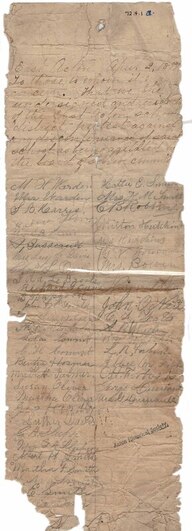 April 1897 Petition April 1897 Petition New Becomes Old Unfortunately, one generation’s “substantial and convenient” building can turn into a later generation’s “smaller” and “inconvenient.” The brick schoolhouse got hard use. As early as 1862, some were advocating for new school buildings in town, but resources were extremely strained by “this grievous war.” No building was done at that time, but the school committee mentioned that “if a change of house is really needed in any district, it is in the East. Their house is more worn, smaller and more inconvenient in proportion to the number of scholars than any other in town.” (1861-1862 School report, page 20) It was not until the 1870-1871 report that a “nice and commodious" schoolhouse had been built. It was a wooden building at about today’s 209 Great Road (around the corner from the Strawberry Hill Road location). The next few years saw wooden schoolhouses also built in the South, West, Center and North districts. The c. 1841 brick schoolhouse was sold in 1870 to Henry Brooks who owned the abutting land. From 1875 and 1889 maps, it appears that he used the building as a paint shop. Ida (Hapgood) Harris, a teacher in the East Acton school in the 1890s, wrote a brief history of the Acton schools. She stated that the East Acton brick schoolhouse had stood on the left side of the road as one was heading away from Great Road, but by the time she was writing in 1937, it was no longer standing. The 1870 wooden schoolhouse was used through Spring 1897. By that time, views of education were changing. Classrooms in which one teacher taught up to eight grades were no longer in favor with educational experts. Apparently, not everyone agreed. It took several years of persuasion by the School Committee and others to make a change. Part of the problem was transportation. Residents from East Acton in June 1896 petitioned to use the funds being spent on the East School to pay for transportation of its students to the Center School. The town refused. This may explain why, in advance of the April 5, 1897 town meeting, a number of East Acton residents signed a protest petition against closing the East Acton school. Whether or not the petition had its intended effect, the Town finally voted to pay to transport the East Acton scholars. The East School was closed and its students were transported to the Center school starting in Fall 1897. (The North school followed in 1899.) The East schoolhouse was sold off. It went to Isaac R. Beharrell, a carpenter and contractor who moved it to West Concord and apparently used it as an office for his business there. We have not yet found out what eventually happened to that East School house. Does it still exist somewhere in West Concord? Was it later torn down? Does anyone have a picture of it during its time in Concord or while it was in East Acton? Please contact us if you can help. Vestiges of East Acton's Schools The Society owns some items related to the East Acton school district in addition to the 1897 petition pictured above. A listing of all students in the "East" district is discussed in a separate blog post. Another document was produced by early-1850s East Acton students, tallying up contributions toward a gift for their teacher Luther Conant, Jr. The Society also owns two large keys, both of which were said by the donors to have unlocked an East Acton schoolhouse. Both had connections to the Henry M. Smith family of Brook Street. A large iron key was donated by the wife of Henry M. Smith’s son Charles; she said that it unlocked an East Acton schoolhouse. A brass key engraved with “Wm. B. Davis” had a tag on it (in Henry’s daughter Martha’s handwriting) stating that “This locked the door of the old brick school house in East Acton.” The brass key was found in Martha Smith’s house at 260 Great Road (torn down decades ago to make way for a shopping center). The tag would seem to be a definitive identification for the brass key, except that consultation with an architect knowledgeable in local history and building practices indicated that the brass key was more consistent with an 1870s door lock, while the larger iron key would be a more logical fit with an 1840s lock. Note that William B. Davis was the school committee member responsible for the East School at the time of transition from the brick to the wooden schoolhouse. He probably had a key to both schools. Both keys seem to have ended up in the Smith family. As mentioned, we have no photographs of the brick East Acton schoolhouse. The Society does own photos that we believe, for numerous reasons, are of the 1870 East Acton schoolhouse. It is in keeping with all of our adventures in the East District that the identification was not simple. The best-identified photo included schoolchildren. The back of the photos says (probably written at least in part by a Society volunteer):
Fall 1889 East Acton School Harris St. Danny Wilson age 9 Effie Wilson Age 6 Gift to the Library by Mrs. Bertha Wilson Joslin, 3 Bow St. Concord, Mass. We are very grateful to Bertha Wilson Joslin for her donation. We believe that it solves our photo identification problems, despite the fact that someone gave the wrong address for the East Acton School. (Harris Street was for some years the site of the North Acton School, never the one in East Acton.) To confirm that the photograph was, in fact, East Acton’s school, we researched the family of Danny, Effie, and Bertha Wilson. They were all children of John Dwight Wilson and Agnes Maria Andrews who came down from Maine (where Danny and Effie were born). John took a job as a prison guard at the Concord Reformatory in 1887. At first, our research made us think that we might never prove where they lived in Acton and where their children would have gone to school. Our late 1880s maps seem to focus on owners, not renters, and we did not find the Wilsons. There is no 1890 census to help. The 1890 town valuation shows that John Wilson was not a property owner; his name was on a list of people who only paid poll tax. Luckily for us, however, another record exists. On August 2, 1889, Agnes Bertha Wilson was born to parents John and Agnes. Unusually, the town clerk that year listed in birth records the section of Acton in which the parents lived, instead of simply writing “Acton.” The Wilsons in August 1889 were indeed living in East Acton, meaning that their children would have attended the East Acton school on Great Road, and we had an identification for the schoolhouse. Finally identifying East School pictures because of Bertha Joslin's donation is a reminder that our ability to answer questions about Acton’s people and history is often dependent upon whether or not someone happens to have donated an item that gives us the clues we need. If other photos of the East Acton school (and other Acton scenes) still exist, having copies in our archives would be a big help to future researchers. Sources Consulted
Ella Miller’s five-year diaries at our Society give us an idea of what life was like for a career Acton schoolteacher at the beginning of the twentieth century. An issue that Ella mentioned often was the complications she faced in getting to and from work. As mentioned in our previous blog post, Ella’s earliest teaching job would have presented few commuting problems. After graduation from Framingham Normal School in the spring of 1896, she started teaching that fall in the same schoolhouse that she had attended in North Acton around the corner from her home. Ella’s time teaching in North Acton was the end of an era. One-room schoolhouses were being consolidated into larger schools. In the fall of 1899, Ella and the students from North Acton were sent to the “Centre” school on Meetinghouse Hill, following the East Acton school that had been closed in 1897. Southeastern Acton students were sent to the South Acton school the year before that. The idea behind the consolidations was that they would improve students’ educational experience by reducing the number of grades a teacher needed to handle. Ella became teacher of the Center school’s intermediate students, with grades 4-6 in her classroom. The move to the Center School, while it may have reduced Ella’s in-classroom complications, added complexity to her travels to and from her North Acton home. The distance was a little less than two miles, by today’s standards a miraculously short commute. In Ella’s day, those miles could be a challenge. Though she lived near train tracks, the trains, even if they came through at the right time, did not go to Acton center. Ella, who would at the diaries’ beginning have been dressed in a long skirt and wearing a corset, found various ways to get to her job. There were days in all seasons when she would walk, either because of nice weather or lack of other options. On some days, she bicycled, and on others, her father gave her a ride in a horse-drawn vehicle. Without weather forecasts, there would have been plenty of room for error. On some days, she optimistically took her “wheel” to school, only to be faced with rain in the afternoon. Even if her father hitched up a horse and took her to work, there were factors to consider. Was there mud, ice, or snow to deal with? Occasionally Ella would mention that the conditions were “so slippery and horse smooth” that the going was extremely difficult; the horse’s shoes had to match road conditions. There was also an important decision to make about whether to take a wheeled vehicle or use “runners” for going over snow. Once choices were made, occasional mishaps were inevitable. In Jan. 1909, she reported that she had gone to school in the sleigh, but the going was rough. On one memorable day in Feb. 1911, a man who sometimes worked on the Miller farm took Ella in the sleigh. En route, “a runner broke & lowered my side to the ground. Came back and went in the wagon.” The following day, the sleigh went to the blacksmith’s shop. The Millers put their “democrat” wagon on runners, and after that it was “fine sleighing.” As snow receded, road conditions were variable and a real challenge. She walked home on Feb. 26 and 27, 1914 and said “Rather hard walking because snow is getting soft & makes it slumpy.” Then came mud season. On March 8, 1912, Ella wrote “Getting muddy but snow lingers in patches, slippery in shady places on the road.” On March 31, 1918, she wrote “A bad mud spot for autos just north of the house. Pa had to help Mr. Park of Chelmsford out with the horse & warned others.” The following March, Ella noted that there was “an auto stuck in the mud for 2 hours out here toward dusk.” Sometimes, other people made the roads even worse. In December 1914, Ella noted that “The trucks carrying Halls’ logs are making bad work of the roads, especially down beyond Hollowells”. When, finally, the roads dried up, Ella could ride her bicycle to school. Ella would note in her diary when she took her first spring ride. Not surprisingly, she would occasionally have issues with her bicycle. The second day of school in September 1908, her pedal came off, and there were inevitable problems with wheels and tires. Her neighbor Elmer Cheney often helped her with repairs, putting in a new valve or adding “Neverleak” to a tire. Sometimes if it rained after school, she would ride home anyway. She was a hardy person, but even she mentioned at the end of October 1914 that she’d gotten chilled coming home on her bicycle. (There was a little snow that morning, and it reached 33 degrees at night). She must have been particularly determined (or desperate) on Dec. 2, 1918 when she rode her bicycle at 16 degrees. The one option that Ella had for public transportation was to take the “barge” that the town provided for students from outlying areas to get to school. The barge was horse-drawn and provided (some) protection from the weather. Ella seems to have made a practice of taking the barge only when it was particularly needed. She mentioned conditions that induced her to take the barge; muddy roads, rain, thunder and high wind, sub-zero temperatures, a major snowstorm, and her family horse being lame. On May 11, 1917 she wrote that she “came home in barge every night, partly because of ironing, cooking, weather & Aunt Eliza being here.” Riding the barge was not a perfect commuting solution. The barge drivers had the same issues with deciding between wheels and runners as did the Millers. Some days were tough going. Children’s absences were often blamed on late barges, but Ella couldn’t afford to be late. On March 6, 1923, Ella reported that the “East Acton school barge tipped over yesterday morning on the way to school and several children had slight bruises.” There were also occasional behavioral incidents during the trips. On Feb. 8, 1912, Superintendent Hill came to school at Ella’s request to talk with a student “about his immoral language in the barge.” On December 15, 1921, Ella reported “Trouble in the North Acton barge going home last night – Boys pounding Kathleen so she didn’t come to school.” That incident led to another superintendent’s visit. By the 1910s, some people in Ella’s acquaintance had bought automobiles. Superintendents in early days covered multiple towns. In 1910, superintendent Frank Hill supervised Acton, Littleton and Westford. The 1911 reorganization of the district to include Carlisle seems to have become too much, and Mr. Hill started making his trek by auto. In April 1915, Ella’s co-teacher and friend Martha Smith got an automobile. In the later 1910s, Ella would sometimes get rides get rides from Miss Smith and others. Over the years of Ella’s diaries, it is interesting to note that while some, like the Smiths, started traveling by auto, the horse remained the means of transportation for many. As late as January 1926, Ella noted that it was icy for autos that morning, so “Pa got horse sharpened.” Even though cars would have solved many commuting problems, they added their own as well. In 1917, Ella mentioned that “Miss Smith wrenched her back cranking auto last night. Feeling mean but came to school.” (Mean was Ella’s term for sick or sore.) On two other occasions, Ella mentioned men breaking an arm while cranking their automobiles. Other teachers had their own commuting issues. Those who were living in other towns might rely on trains. Ella noted in Dec. 1917 that Miss Barrett had not gotten to school until 9 o’clock because her train was late and she missed the barge at East Acton. Ella’s father picked her up with horse power. Miss Durkee, an hour late in March 1920, had resorted to snowshoes to get to school. Whatever the mode of transportation, the condition of the roads mattered. Ella occasionally mentioned men working on the road, macadamizing (putting down gravel) or tarring. Snow clearing was a perpetual problem. In Feb. 1920, a storm dropped so much snow that men including Ella’s father shoveled the road by hand to make it wide enough for an auto. Later that week, Ella mentioned her father shoveling the North Acton driveway where drifts were four feet deep. A particularly memorable road issue was caused by the Freeman family in 1914. On Sept. 6, Ella reported that Mr. Freeman had bought a little house and was going to move it onto Ruth Robbins’ North Acton land. At various times in October, Ella would mention which part of the road was affected that day. On Oct. 8, Ella mentioned that it was right across the road that evening. A week later, it was half way to the brook. On the 19th, “Freeman’s house is at the brook, so we go by through the brook.” The next day, “Freeman’s house was almost at the corner so we could go around the triangle.” On Sunday the 25th, “The autos have been very thick by here today & yesterday afternoon because Freeman’s house still blocks the state road.” Presumably the house reached its destination soon thereafter, because the traffic reports stopped. 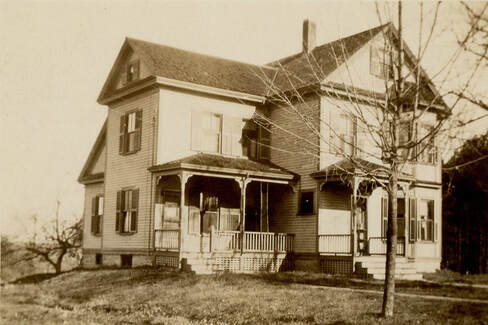 Miller Home, 32 Concord Road Miller Home, 32 Concord Road A New Commute, Twice In 1919, Ella’s mother passed away. It was time for a change. Ella bought a house just outside the center at 32 Concord Road. For a while, the family went “down home” to the farm periodically. There was a time when the property was rented, but eventually a buyer was found. The move to Concord Road would have made Ella’s commuting to the Center School considerably easier. Snowy days were still a problem, of course. In January 1923, Ella tried skiing and liked it enough to buy skis of her own. She used them occasionally to get to work on days such as Jan. 15, 1923 when it was snowing hard and the barges had difficulty getting through. She learned later that winter that skis might not be so useful for getting home if the snow had softened up. The horse-drawn school barges were replaced by school busses in the fall of 1923. In the winter of 1924 and 1925, Ella mentioned that the busses had trouble getting through snow-filled roads and brought the children over an hour late. In Jan. 1925, a bus got stuck on “Pope’s Road” and didn’t deliver the last children home until 6:30 pm. Ella never mentioned missing the old sleighs in the winter, but it might have occurred to her. Ironically, after moving closer to her work, Ella’s commute became longer again in 1926. After years of contention (see blog post), Acton finally had managed to agree to build a high school that opened up at Kelley’s corner on January 11, 1926. On March 1, 1926, the 7th grade went to that building with Ella as their teacher. Ella’s father borrowed the Smiths’ horse and took her to school that day. On the 10th and the 15th, Ella mentioned that the roads were slippery for the horse to cope with. On the 18th, a neighbor gave Pa some “never-slip” shoes for the horse that were put on by the blacksmith. Ella’s sister Loraine gave her a ride to and from work on the 16th, and that may have convinced Ella to buy her own car on the 20th, a Ford coupe (known to us as a Model T). Driving lessons followed from friends and her sister. Ella mentioned learning to back up and turn around in the field below the cemetery and practicing turning around “up on edge of Boxboro, at Mr. Tenney’s, Miss Conant’s, Taylor’s store & schoolyard.” Her father continued taking her by horsepower, but as the new school year began, on Sept. 7, 1926, Ella wrote that she began going back and forth in her own car. The freedom must have been welcome, although later entries showed that Ella started having familiar-sounding problems. As cold weather arrived, her car wouldn’t start. She got chains for her tires and needed repeated charges for her battery. Water, alcohol and glycerin were put into the radiator and taken out again. On one ride, she noticed her steering wheel wobbling badly. At other times, her foot pedals needed adjusting, and there were issues with her generator. At the beginning of the next school year she reported, “Had a new experience with the car – couldn’t start it without pushing because something locked.” That was soon followed by “Had the brakes + lights on my car tested by Harold Coughlin. One headlight was not working – a surprise to me.” In October, after a teachers’ meeting, Ella had to ask the superintendent to crank her car, not an ideal work situation. We are missing Ella’s 1928-1932 diary, so we don’t know many of the details from those years. Driving must not have been a perfect solution for Ella. We learned from the Superintendent’s annual report that Ella moved back to the Center school, “nearer her home” in the fall of 1931. A relative newcomer, the superintendent reported that “at Acton Centre all teachers are new to the building,” which must have amused Ella after her many years there. She became principal of the Center school, and Marion Towne took over the seventh grade in the high school building. By the time Ella was writing in her final diary, 1933-1935, she made a practice of not registering her car until April. She would find other ways to get to school in the winter months. (She did mention that the weather would have allowed her to take the car to school every day in January 1933 if it had been registered.) By March 1933, signs of her failing health were beginning to show. Ella, who had amazing energy in her younger days, mentioned that she was getting winded walking to and from school. Mr. Fobes started transporting her, for which she was grateful. Ella continued to drive in better weather. Two of Ella’s final diary entries related to her car. On May 16, 1935, she got an oil change and the next day she wrote “All in tonight. Managed to take car to W. Acton by appointment & left to be tested and brakes relined & for them to bring home.” Sadly, that seems to have been her last excursion. By then, her heart was apparently giving out. Her diary entries stopped on May 25, and, as her sister Loraine noted in the diary later, “Ella’s work ended” on June 4. The Centre Grammar School was closed during part of the next day so that her pupils could attend her funeral. At age 57, she had been the oldest and the longest-serving teacher in Acton. 3/26/2021 Lyman Cutler's Select School, 1849As mentioned in a recent blog post, in mid-1800s Acton, a college student or recent graduate could earn funds by teaching an advanced private school session during the fall when the public schools were closed. A descendant of a student in one of those schools recently shared with us a document relating to Lyman Cutler’s Select School held in the autumn of 1849. This presumably was the Mr. Cutler whose teaching in the fall of 1848, according to the 1848-1849 School Committee report, was so popular that it created problems for the teacher of the public school in the winter term; the older students apparently did not give the public schoolteacher a chance. Until seeing this document, we did not know that Mr. Cutler came back to Acton the following autumn. The document lists the 29 students of the school, divided into “Masters” and “Misses.” Some were also students in F. W. Pelton’s 1852 private high school, and some were siblings. The document may have been a recommendation, because the “Remarks” at the bottom state that, “The Scholars enjoyed the School without any exceptions, and in the opinions of Visitors made good improvement.” We looked into the life of this promising teacher. Lyman Cutler was born in Holliston, MA on August 4, 1826 to Amos Cutler and Sarah Topliff. He had at least three brothers and a sister. Instability and tragedy seem to have affected the family during Lyman’s childhood, and Sarah and her children returned to Dorchester where she had grown up. Despite apparent early difficulties, three sons were able to pursue higher education. Lyman studied privately under Reverend Dr. Perry of Bradford, MA and entered Dartmouth College in 1843. While there, he was a member of the Alpha Delta Phi fraternity. He graduated with honor in 1847 and immediately went to Andover Theological Seminary. It would have been during fall breaks in his Andover studies that he taught in Acton to earn money. He graduated in 1850. (Two younger brothers followed him to Andover Theological Seminary; Calvin, who graduated from Dartmouth in 1856 and Seminary in 1861 and Elijah who graduated from Williams College in 1856 and Seminary in 1862.) The newly-minted Reverend Cutler was called to the Evangelical Church in Pepperell, MA and was installed on January 22, 1851. The Boston Recorder reported the event and indicated that Pepperell had done well to have obtained Lyman Cutler as their pastor, because his “reputation as a youthful preacher has already made him somewhat in demand among the churches.” (Jan. 30, 1851, p. 18) On March 14, 1851, he married Elizabeth Hill of Conway, NH. Lyman Cutler returned to Acton to participate in the installation of Rev. Benjamin Dodge at the Evangelical (Congregational) Church in October, 1852, presumably seeing some of his former students there. Rev. Cutler was only in Pepperell for 2.5 years. While there, however, he managed to get into a dispute with Daniel Foster, a speaker for the Massachusetts Anti-Slavery Society who lectured in Pepperell in May 1852. The dispute may have been partly personal and partly religious, but without actually mentioning names, Rev. Cutler apparently attempted to persuade his flock that Daniel Foster was not to be trusted, causing quite a furor. To be fair, we only have the words of aggrieved letter writers in the Liberator and not Rev. Cutler’s side of the story. (Oct. 8, 1852, p. 163, Dec. 17, 1852, p. 204) He was not the first minister with Acton ties to be at odds with the Liberator, as discussed in our blog post on Rev. James T. Woodbury’s dispute with Liberator editor William Lloyd Garrison. (We can see from the student list that Reverend Woodbury’s son Porter was in Lyman Cutler’s 1849 school.) Other references to Rev. Cutler’s career were more favorable. He did not have long to prove himself. By November 1853, he was sick and asked to be dismissed from his role in Pepperell. It was a difficult decision for him. With rest, he managed to regain his health enough to start preaching again. Though not in perfect health, he was called by Eliot Church in Newton to be their pastor and was installed there on October 25, 1854. Unfortunately, 1855 was a terrible year for the family. Lyman and his wife Elizabeth lost their only child Lyman Edwards Cutler on January 16, 1855 at the age of sixteen months to “congestion of the brain.” The Boston Herald had just reported that Rev. Cutler was in a “feeble state of health” himself and would be taking a leave of absence with pay. (Jan. 12, 1855, p. 2) Sadly, on April 28, 1855, Lyman succumbed to tuberculosis at the age of 28. His gravestone, next to his son’s in East Parish Burying Ground in Newton, was erected by members of the Eliot Church “in memory of their late beloved pastor.” A lengthy obituary in the Congregationalist mentioned Lyman Cutler’s ability to speak with “great force and beauty of imagination,” “great emotive power” and “irrepressible fervency.... When he was impassioned the tones of his voice were thrilling. The work of persuading men was natural to him.” He was also apparently social and warm-hearted and had a capacity for drawing “to himself the hearts of his fellow-men.” (May 18, 1855, p.1) It is not at all surprising that Lyman Cutler’s school would have been exceptionally popular with Acton’s students. References: A comprehensive biography of Lyman Cutler can be found in the Congregationalist, May 18, 1855, p. 1, “Rev. Lyman Cutler.” His select school is mentioned in the 1848-1849 Acton School Committee report, p. 11. He also appeared in catalogues of alumni of both Dartmouth College and Andover Theological Seminary and was mentioned in his brothers’ biographies as well. See especially his entry in Chapman’s 1867 Sketches of the Alumni of Dartmouth College, page 366. The Boston Recorder described his installation at Pepperell (Jan. 30, 1851, p. 18) and Newton (Nov. 2, 1854, p. 174) and his visit to Acton (Nov. 4, 1852, p. 178). Brown University has a copy of his 1854 installation program in its archives. A biography of Daniel Foster that sheds some light on the dispute with Lyman Cutler and other “orthodox” ministers can be found in the October 2005 newsletter of the Chester Historical Society, “Reverend Daniel Foster ‘The Fighting Chaplain of the Massachusetts 33rd.” Thank you to our donor for sharing information about Lyman Cutler’s Select School. In the course of researching Rev. Cutler’s time at Dartmouth, we found quite a few other Dartmouth students who taught in Acton. Most taught in the winter term of the public schools and were discussed in school committee reports. We did not find such records for the teaching of Reverend James Fletcher (1843-1844) and Sylvanus Dearborn (1855), either because of record availability or because they taught privately. If you have more information about their teaching or about other private school teachers in Acton, please contact us.
In the years before Acton had a high school of its own, students wanting to further their education needed to take opportunities where they could be found. In Acton’s early days, young men were usually the ones to seek education beyond the schoolhouse; they might be given advanced training or prepared for college by a learned individual, often the town’s minister. In the 1800s, more opportunities arose for young men and young women; some might board at private academies or, as time went on, commute to a nearby high school. In the early 1850s, Acton’s advanced students had the option of studying for short periods at a privately-run advanced school. Our Society’s collection includes a program for an exhibition of F. W. Pelton’s High School in the center district of Acton, starting at 6 p.m. on November 19, 1852. It must have been a long evening; there were twenty-seven items on the agenda, including two dramatic pieces. The Exhibition As evidence of what was going on in the minds of young Actonians in 1852, the “programme” is a revealing document. Even in a small town, there was obvious interest in the issues affecting the country as a whole. Abolition was the foremost theme of the evening. Uncle Tom’s Cabin, though now criticized because of its racial stereotypes, was hugely influential in raising awareness of the evils of slavery. It had been serialized starting in June 1851 but had only been out in book form since March 1852. An early performance in Acton, featuring over 30 performers, would have been a notable event. The song “Little Eva” that followed the performance was based on the book and had recently been published in Boston. Other items on the program that involved the issue of slavery were “declamations” on Anson Burlingame’s opposition to the 1850 Fugitive Slave Act, Grimke’s “Bible”, presumably Angelina Grimke’s “Appeal to the Christian Women of the South” (1836), and Henry Clay’s attempts to save “The Union” without war. Other declamations had as their subjects Daniel Webster’s writings on Washington and on “The Present Age,” Lajos Kossuth, a Hungarian leader whose words had managed to catch the popular imagination in the United States, Napoleon, and the Whig Party (written by the schoolmaster himself). We were not able to identify all of the items performed. Ames’ “Character” may have referred to one of Fisher Ames’ writings, but there is not enough information to be sure. Stuart’s “Birthplace of Liberty” and Snowball’s philosophy were similarly hard to pin down. In online searching, some of the titles are now overshadowed by later writings and events. A search for Snowball’s “Philosophy” led to many references to George Orwell’s Animal Farm. Searching for “A Nation Mourns” brought up references to Lincoln’s assassination, and “Modern Humbugs” yielded P. T. Barnum’s book The Humbugs of the World, both dating from the 1860s. (“Modern Humbugs” by Florentinus may have been a tongue-in-cheek piece written by the schoolmaster; see the section on him below.) Drama, songs, and poetry were easier to find. “The Tongue Bridle” was a dramatic piece for “four older girls” published in Boston in 1851. Thanks to the Library of Congress’ Music Division, we were able to find the 1849 Ossian’s Serenade, the 1851 Oh, Must We Part to Meet No More?, and The Green Mt. Yankee, a Temperance Medley, published in Boston in 1852. Once we had navigated past references to Led Zepplin songs, we were able to find an 1848 song by I. B. Woodbury that set Tennyson’s poem "The May Queen" to music. Henry Theodore Tuckerman’s “Love and Fame,” Henry Wadsworth Longfellow’s 1841 “Excelsior,” and Henry Ware, Jr.’s “To the Ursa Major” can all be found in online poetry collections. The only item with a strictly Acton theme was Pierpont’s poem “Acton Monument.” One wonders if the entire poem describing the events of April 18-19, 1775 was recited; even at its debut, the audience became impatient with its length. Rev. John Pierpont of Medford presented the poem at the celebration of the completion of Acton’s Monument in 1851. The reverend had the misfortune that day of being slated to recite after an hour-long address by Governor George S. Boutwell and just before the meal was served. Hungry attendees started eating during his recital of the poem, and the clatter of utensils clashed with the sound of the reverend’s voice. Apparently, he got quite upset. Acton’s Rev. Woodbury, who could have tried to quiet the crowd, instead said a quick grace and let the dinner officially begin. Boutwell’s Reminiscences quote Woodbury as telling the poet, “They listened very well, ‘till you got to Greece. They didn’t care anything about Greece.” (page 130) By that point in the day’s speeches, the audience might have been losing enthusiasm for Acton as well. Later, obviously having calmed down, Rev. Pierpont commented on the situation that “Poets at dinners must learn to be brief, Or their tongues will be beaten by cold tongue of beef.” [Boston Evening Transcript, Oct. 30, 1851, p.1) The audience at Pelton’s High School Exhibition had to have been tired by the end of the evening. After speeches, songs, poetry, and drama, Arthur Cowdrey capped off the event with a declamation in Latin from Virgil. Presumably this was to wow the audience. (Clearly, Mr. Pelton was able to teach his students a range of subjects.) Miss A. B. Fletcher performed her fourth musical number, and the evening was finished. Acton’s Private High Schools
We had thought that perhaps F. W. Pelton’s high school was unique to him. However, a speech by one of his former students explained that Acton’s private high school, at least for a time, was an annual occurrence taken on by a college student during a break from his studies. It allowed a college student to earn funds and benefited the townspeople by supplementing their publicly-funded education. Eben H. Davis told Acton’s high school graduates in 1895 that: “When I was a boy, the only high school in the town was a private enterprise, held but a few weeks in the fall, in the centre of the town, and kept by some college student to eke out his college expenses. There was no orderly course of studies, but each student selected such branches as his fancy dictated or friends advised, for which he paid his own tuition. In this way it was possible to obtain a smattering of Latin or Greek, an introduction to the elements of science, and some knowledge of mathematics. But, in order to fit for college, I had to attend an academy, one hundred and fifty miles from home. ... I would by no means speak lightly of the schools of my boyhood days... Nor were those brief terms of high school studies without influence. They opened up to us new lines of thought, and the personality of the teachers, fresh from college and imbued with zeal for a higher education, made a strong impress. It was through contact with such influences that I was inspired with an ambition to go to college.” (Town Report 1896, p. 83-84) Contrary to what we had expected, this high school was not simply for older students who had progressed beyond the curriculum of Acton’s schoolhouses. Some of the students were fairly young. From reading school committee reports of the time, we discovered that the public schools in the early 1850s had a summer term and a winter term; the private school in autumn obviously filled a gap, not just of higher learning, but in a time of the year when scholars would not have been able to continue their studies. We have not yet found all of the college students who led a private autumn high school in Acton, but we did find mention of a Mr. Cutler who seems to have run a popular private school in the fall of 1848. The school committee report of 1848-1849 alludes to the difficulties of a Winter Term teacher, Dartmouth College graduate Mr. Whittier, who had come with great recommendations. “Mr. Whittier, in assuming the duties of his school, was somewhat in the position of the poor king who followed the people’s favorite, when nature’s poet said, ‘As when a well graced actor leaves the stage, All eyes are idly bent on him that enters next.’ Mr. Cutler in his select school had won all hearts, both of parents and children, and they thought his like would never appear again. This feeling among the leading scholars was a great injury to the school, which ought to have been one of the best.” We will set aside research into Mr. Cutler’s identity for another day. If anyone knows more about him or other Acton private school teachers, please let us know. The 1852 Schoolmaster, F. W. Pelton We know very little about F. W. Pelton’s brief time in Acton. We were able to identify him because the 1853 school committee report mentioned hiring F. W. Pelton “of Union College” to teach the Centre School in the winter term 1853 after he had run a private school in Acton Center in the fall of 1852. The mention of Union College allowed us to confirm that he was Florentine Whitfield Pelton, born in Somers, CT on April 23,1828 to Asa and Lois Pelton. According to Jeremiah M. Pelton’s Genealogy of the Pelton Family in America (page 477-478), Florentine Pelton left home at a young age, supposedly taught in New Jersey, and furthered his studies at Wesleyan Academy in Wilbraham, MA and Union College. The year in which F. W. Pelton taught in Acton was an unusual one. At town meeting the previous April, Acton had elected a School Committee of three clergymen. All three had left town by the end of the year. (One was Rev. J. T. Woodbury, discussed in a previous blog post.) Ebenezer Davis and Herman H. Bowers wrote the subsequent School Committee report. Two of Ebenezer Davis’ children had attended Pelton’s fall High School. F. W. Pelton’s winter term at the public school seems to have been much less successful than his private school experience. (School committees in the nineteenth century could be merciless in their reports, and teachers had no ability to present their viewpoint.) It is likely that having 52 students of varying ages, with an average attendance of 44, was a contributing factor, as well as the fact that the curriculum would not have been driven by students’ interests as it was in the private school. Pelton may already have been in career transition during his Acton period. He soon made the law his career, studying with C. R. Train and at Harvard Law. He was admitted to the Middlesex County bar in 1855, and practiced first in Marlborough and then in Boston. He married twice, first to Laura M. Buck, a graduate of the State Normal School at Framingham, MA, on Dec. 18, 1855. The couple had two children before Laura died from complications of childbirth in 1860 in Newton where they were living at the time. Pelton married Mary Reed Whitney in Waltham, MA on Nov. 20, 1862, and the couple had eight more children. In addition to practicing law, Pelton dealt in real estate and was responsible for the construction of a number of houses in Dorchester, MA. Toward the end of his life, he retired from the law, focusing on various business ventures. He settled in Dedham, MA where he died of “chronic peritonitis,” probably a complication of his diabetes, on June 25, 1885 in Dedham. We found no reference to Florentine W. Pelton’s time in Acton in newspapers, family histories, or obituaries. However, his experience there may have led to this thought from the report of the Newton Grammar School Sub-Committee, of which F. W. Pelton was a member in the 1860s: ”If the varied, difficult and exhausting work of the school-room could be understood at home, there would be more sympathy and less fault-finding with the teacher.” (Annual Report, Mass. Board of Education, Vol. 27, 1864, p. 92) Indeed. The Exhibition Participants There are many names on Pelton’s 1852 Programme, but there were only a few that we could not track down. Perhaps those students were not residents of Acton; the school committee report of 1853 mentioned that some private school scholars in the past had come from out of town. (p. 5) In the rest of the cases, we found individuals who would have been between twelve and eighteen in the fall of 1852. Among the sources we used were school committee reports; it is not surprising to find that young scholars who were enrolled in an extra school in the fall of 1852 were also commended for excellent attendance at the public schools. As best we can reconstruct it, the following is our list of Pelton’s high school exhibition participants: 9/26/2020 Yesterday's Problems in Acton Education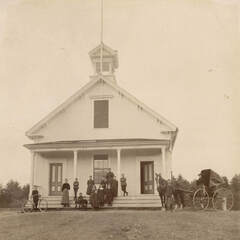 North Acton School, mid-1890s North Acton School, mid-1890s As a salute to those who are dealing with the infinite complexity of trying to educate students in the midst of the COVID-19 era, we turn this month to Acton’s school history. Presented here are a few struggles of days past. One Teacher, Many Grades In early Acton, the community seems to have viewed teachers’ role in the schools primarily as keepers of order rather than as educators in today’s sense. As the 1891-1892 School Committee report noted, “Within the memory of some now living, a hundred scholars were in one school, with one teacher. The discipline of the crowd was ordinarily enough for any master to manage, without wasting his strength on the minor matters of instruction. The little ones on the lower seats were pleased if they had one chance recognition in the course of the long day from the master in the desk.” (p. 48) By the 1890s, expectations of teachers had changed. By that time, teachers were supposed to instruct classes, rather than simply to hear students recite. The problem with the new approach was that it was demanded of teachers whose working circumstances had not been adjusted to the new expectations. Acton’s school committee report in March 1896 explained: “There are at present seven grades in the East and North schools. One of the best arranged daily programs of work I have seen for a school of seven grades called for thirty-three class exercises per day. Allowing thirty minutes for two recesses, there are left three hundred, thirty minutes for thirty three class exercises, or ten minutes to a class, and this includes the time for all individual work. This number of class exercises is altogether too many for satisfactory instruction and drill, but the East and the North schools have even more than that number. It is an impossibility for a teacher to teach a class properly in ten minutes, and follow it up all day.” (p. 66) In the larger schools, the issue was large class sizes coupled with a range of ages. In Fall 1894 (p. 61), the South Acton primary teacher had 51 students enrolled in her classroom and not only had to deal with classroom management but also had to be prepared to teach four grades’ worth of material each day. (Bertha Gardner, we salute you.) The superintendent wrote in his March 1896 report that “To teach is to direct the work of the pupils, to show them how to study, to arouse their interest, to train them to habits of clear, concise, and connected expression, to examine their written work, to cultivate in them a love of study and lead them to investigate for themselves, to impart information, and to lead pupils to apply the things learned.” (p. 66) That seems a little ambitious for ten-minute class periods. 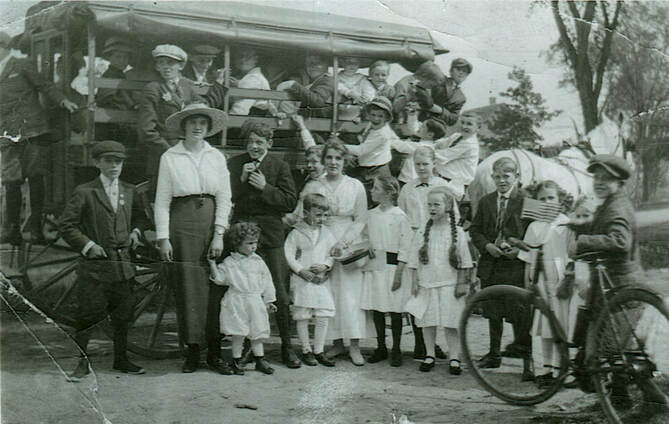 Acton Center School, Barge, Teacher & Students, c. 1915 Acton Center School, Barge, Teacher & Students, c. 1915 Two Teachers, One Schoolhouse In a brief entry in the 1863-64 Superintendent Report, we learned about a problem in the East Acton school. “In consequence of some misunderstanding between the Committee and two female teachers who both laid claim to the school, it was decided to employ a male teacher for the Winter term.” (p. 31) The logic behind that solution, unfortunately, remains a mystery. Two Superintendents, One Town A more open dispute occurred in 1884, when the School Committee managed to appoint competing Superintendents. Rev. Franklin P. Wood and lawyer Frederick C. Nash had both served in that role in recent years. In April 1884, missing one sick member, the Committee voted 3-2 for Rev. Wood to serve. After a member objected that the full committee should have been present, a new vote was arranged at the home of the sick member. The supporters of Rev. Wood refused to participate, calling the new vote illegal, leaving the supporters of Frederick C. Nash with the victory. Nash started fulfilling the duties of Superintendent, Rev. Wood applied to the state’s Supreme Court for an injunction to stop Mr. Nash, and the Committee and the town split down the middle. (Boston Globe, Apr. 20, 1884, p. 1 and Apr. 23, p. 4) Mr. Nash seems to have won that round, and education proceeded. In the 1885-1886 year, Rev. C. L. Rhoades was appointed to replace Mr. Nash. In his first report, he said that “Perfect unanimity has existed between members of the Committee, and between the Committee its Superintendent, during the year.” (School Committee report, p. 1) That optimism was tempered the next year with a report of unanimity except for interference from “outside parties, not parents of any children in the school(s)” (1886-7 Superintendent’s report, p. 31) Soon thereafter, a huge controversy broke out over a West Acton teacher’s disciplinary measures, the process used to investigate them, and the fact that the Superintendent was not allowed to speak in a meeting to defend himself. Somehow Frederick C. Nash became involved in the hostilities, probably as part of the “outside interference” mentioned in the previous report. The superintendent and three out of four members of the school committee resigned. (Boston Globe, March 14, 1887, p. 8) Rev. James Fletcher was appointed in his place. In a feat of longevity, he managed to last until the town joined (perplexingly) with Sturbridge and West Brookfield in a joint superintendency arrangement in the 1892-1893 year. (Apparently, state aid was part of the joint superintendency deal.) Blizzards are Good for Them Since the beginning of Acton’s history, there has been recognition of the need to educate the town’s children, giving fair access to all. However, deciding how to achieve that goal has been a source of disagreement. There were always those who advocated for better schools, in one way or another, and those who resisted on budgetary or other grounds. There was often contention over where schools would be located and how far students would have to travel to get there. The 1851 School Committee report dismissed concerns from residents of the more remote areas of town: “Parents generally fear the distance more than do the children. What if they do face the winds and buffet the storms of winter? It only makes them more hardy and more courageous. Our children have bones and muscles as well as minds; while the latter are being developed by judicious training, the former must be enlarged and strengthened by constant and vigorous use, so that they may possess sound minds, healthy frames, and cheerful hearts. Every obstruction removed, every obstacle overcome in their school-boy days, will prepare them for the earnest struggles of real life. The boy or the girl who bravely treads the snow for long miles to school, is not likely to be a loiterer there; indeed, the tardy and the heedless are rarely those who must, every day, make a vigorous effort to be at school.” (p. 13-14) Eventually, students who lived far from school were, at times grudgingly, given transportation. Students who lived nearer were still on their own (within 1.5-2 miles in many cases, according to the Superintendent’s Report, 1914, p. 20). Even after the transportation of students from outlying areas was the norm, it kept being either cut or threatened with cuts. In their 1895-96 report, (p. 54), the school committee recommended against transporting high school students because “this expenditure is altogether disproportioned to the benefits resulting from it. Parents sufficiently ambitious for the future of their children to send them to the High School ought ... to be willing to provide for their transportation.” (The school committee wanted to hire staff with the money used on transportation. Having a high school at all was a new and contentious issue. See our blog posts about Acton High School in the 1880s and the political drama over building a new high school in town.) Horse-drawn school barges were not a particularly quick mode of transportation. This became more of an issue with the advent of automobiles competing for the road. The difference between today’s attitudes and yesterday’s showed up when the Superintendent recommended that school-barge drivers should move far over to let automobiles pass, both when the cars signaled from behind and when they approached from the front: “They [barge drivers] are charged with the protection of the children, not with the assertion of their legal rights-to-the-road.” (1915 Superintendent report, p. 21) Today’s drivers behind a school bus might consider that at least they are not stuck behind a horse. Rocky Acton Provided Great Recess Materials Recess could be perilous. When safe equipment was not available, apparently rocks would do. In 1908, Theron Lowden was playing “Duck on the Rock” during recess and was hit by a stone as he was picking up one to launch himself. We will leave aside the gore in the report, but Theron was “without the use of his right hand for some weeks.” (Concord Enterprise, May 13, 1908, p. 8) It’s all the Teacher’s Fault, Ventilation Edition For those who have been following the complications of preparing schools for in-person learning in the era of COVID-19, it may be interesting to note that ventilation issues in classrooms are not new. What is different is that it was considered the teacher’s responsibility to keep the students well, regardless of the condition of the schoolhouse. It was a no-win situation. The 1879-1880 School Committee Report called for safe ventilation of school rooms “that so many pupils may not be detained from school by colds contracted there. We trust our teachers will be more particular in the future in this regard. Such care ought to be taken of the health of our pupils that they will be safer, when in charge of the teacher, than when they are at home.” (p. 2) Apparently, opening a window was considered the main danger. The following year, the Superintendent wrote, “We hope, too, that better provisions will be made for ventilating the school-rooms. Teachers too often open windows and expose the children to drafts of air. Boards should be so arranged against the lower window sashes that this danger will be avoided.” (1880-1881 Superintendent’s Report, p. 8) A few years later, the Superintendent raised the issue of air quality, this time because of the foul air produced by coal stoves. “In the absence of the janitor the teacher is ex-officio master of the situation, and his comfort and success, and that of the school, hangs largely upon the temperature and quality of the air in which the work is done. No amount of zeal or tact in conducting recitations will overbalance a vitiated atmosphere. One good current of air from the outside world will often settle problems in discipline and in arithmetic all at the same time.” (School Committee Report 1887-1888, p. 33) One presumes that boards were no longer across the windows to keep them from being opened. As mentioned in our previous blog post on maintenance in Acton’s schools, the disagreement over ventilation continued for years. Ventilators were argued over, installed, seen to fail, and argued over again. Acton managed to defer improved ventilation systems in its schools even after having been ordered to install them by the state inspector, yielding to the argument that opening windows was adequate... and free. (1891-1892 report, p. 45.) Even after improvements were made, ventilation systems were still problematic. Teacher Ella Miller wrote in her diary on March 16, 1911: “Cold, blustering day, hardest to be out in this winter. The ventilator cap blew off the top of the schoolhouse, just before school began.” Obviously, school ventilation is a never-ending struggle. Teachers Need to Work... But Not Necessarily for Money In 1919, teachers had expected to be paid every other week for their efforts, as previously voted by the town. It was socially unacceptable for female teachers to be demanding, but when the teachers had reached the four-week mark without pay, they expressed their annoyance. (The janitors of three schoolhouses had also gone without their pay.) The Sept. 25, 1919 Boston Globe ran a headline that “Two Acton Teachers Threaten to Strike” (p. 7), although it made sure to put quotation marks around the word “strike” in the article. It also pointed out that two of the teachers did not live in town and had to pay for room and board, a justification for their speaking up. (Others, including Ella Miller and Julia McCarthy, were local and apparently were expected to be patient.) An unsourced clipping in the Society’s collection was headlined “Teachers Didn’t Mean Strike Talk.” The article explained that the persuasive out-of-town teachers waited at the depot until the secretary of the school committee stepped off the train and convinced him that they needed pay. Their approach apparently did not go over well in some parts of town, and a story circulated that teachers had threatened a strike and tried to “coerce the school committee into paying them.” Whatever was said, the teachers did manage to get some pay, half of what they were owed, with a promise of the rest and prompt payment in the future. (Boston Globe, Sept. 28, 1919, p. 14) One hopes that the town made good on the promise. The More Things Change... Every school has issues to address, whatever the era. Though we’ve focused on past Acton school issues that are different from today’s, some problems are universal. Ella Miller’s diary of June 11, 1913 reported that “All of us at school are tired and sleepy. Went to bed early.” After all the adjustments of this year’s reentry into school life, one imagines that a few teachers and students might have experienced a day like that. 8/30/2018 Maintenance Matters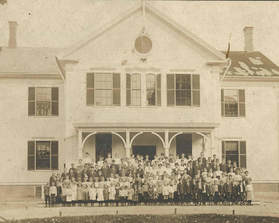 As students and teachers head back to school, it seems a good time to turn our attention back to Acton school history. Reading the School Committee’s annual reports can be eye-opening. Conditions and attitudes could be quite different from today’s. For example, the 1911 report (pages 7-9) revealed that a state inspector had ordered fire escapes for the South and West two-story schoolhouses in September, 1909, but nothing was done about it. In July, 1910, the next inspector repeated the order and additionally called for improved ventilation in the West and Center schoolhouses after “a chemical analysis of the air showed ‘bad contamination.’” To deal with air quality, the school committee had the heating systems repaired. However, “upon the request of the committee the state police did not press the matter of the construction of the fire escapes on the South and West schoolhouses and the matter has gone over until summer (of 1911).” The actual building of both fire escapes was finally noted to be complete in the January, 1913 report (page 22). Postponing investment in school buildings seems to have been a recurring theme. The 1891-92 annual report mentioned that the School Committee and the state inspector had disagreed before: “A contemplated heavy expense upon a change in our school structures for a more satisfactory ventilation, ordered by the State Inspector of Public Buildings, has been deferred for the present... the Board of Health finally decided to annul the order, leaving the whole subject for future deliberation and action.” (page 45) The School Committee suggested that the the issue of bad air in classrooms could be solved by using the “magnificent system of ventilation” available for free; teachers could simply open a window. The 1891-92 Committee was fighting an old battle. As far back as 1846-47, the School Committee reported on air and ventilation problems in the classrooms, especially in winter. To keep a reasonable temperature, the fire in the stove would be stoked, eventually raising the air temperature to uncomfortable levels. Then the upper sash of the windows would be lowered, and cold winter air would pour down on the students nearby. Soon the room would get too cold, the fire would be renewed, and the cycle would begin again. “Thus as though our climate were not changeable enough, the scholars are made to pass from summer to winter and winter to summer, twenty times a day.” (page 11) Stoves used up oxygen needed in crowded classrooms and produced pollutants. In an attempt to improve air quality, ventilators were installed on some of the schoolhouses by 1852, but both the 1851-52 and the 1861-62 reports mentioned that the needed (and relatively inexpensive) adjustable air-intake vents had been omitted, making the system less effective. (page 8 and 21) Air and temperature in the classrooms were not the only problems. In early days, of course, the schools had no running water and no indoor plumbing. The 1846-47 school report mentioned that every school house should be supplied with drinking vessels and, whenever possible, a good well of water. (page 12) Obtaining water was an ongoing issue. The 1911 report (page 9) mentioned that “We have been obliged to make some repairs upon the well at West Acton school and to dig an entirely new well at the South school to avoid sewage contamination.” In the January 1912 report, the school committee noted that “The problem of furnishing drinking water for the West and Center schools is still a perplexing one. There seems no other way at present than to hire it carried.” (page 10) This issue was resolved when town water was finally piped to the West and Center Schools. (Jan. 1913 report, page 22) A teacher’s January 6, 1913 entry in a diary held by the Society told us that “The water-pipe was laid through the pines to [the Center] schoolhouse cellar this vacation.” Water systems were installed in the Center and West schools that summer. However, “It was the opinion of the committeeman from South Acton that this expense was not necessary for the South school.” (Feb. 1914 report, page 7). Before the days of indoor plumbing and septic systems, the schools had to provide other accommodations for comfort and public health. In 1802 town meeting explicitly provided for building and painting “necesary houses” to accompany each schoolhouse. Deferral of costs may also have extended to outhouses, occasionally leading to unappealing recommendations in school reports. In 1881, the school committee emphasized “We consider it very important that the out-buildings of our school-houses shall be properly cleansed every spring.” (page 8) In 1892-93, the added suggestion was that: “the out-houses at the South and West should be provided with better means of ventilation, and those in the other districts be repaired.” (Page 58) Outhouses attracted graffiti. In 1881, the School Committee noted that the outhouses needed to be whitewashed so that “every mark which might make an injurious impression upon the minds of the young shall be obliterated.... Unless constant vigilance is used, in this direction, some of the objections which have been made to our system of common schools, on moral grounds, will prove to be well founded.” (page 8) At least the schools actually had outhouses at that point. In 1899, the town’s inaction had led to such acute crowding in the South Acton school that the town had to rent space in a building near the railway tracks fronting ”a public and much used business square, without grounds and consequently without proper sanitary arrangements.” (1903-04 report, page 12) In the 1920s, costs for indoor plumbing and “sewerage” systems started showing up in school reports, though there were still some problems. The new high school’s septic system did not work properly at first, necessitating more digging. (1927 report, page 24) In 1928, the “unwholesome odors and condition” of the South Acton School’s toilets were finally fixed after having been a problem for years. (page 18) “Flush closets” were voted for the Center and West schools in March, 1922, but the town did not appropriate enough money to complete the job. The Center School got them in 1925. For some reason, West Acton lagged behind the rest of the town. The 1926 report recommended “that toilets be installed in the West School to improve sanitary conditions,” (page 6) and an attempt at funding its “flush closets” was made at the March 1927 town meeting. Nothing was done. In the 1930 report, the School Committee finally reported being “able to install flush closets in the West Acton School. While some other repairs that seemed quite necessary were postponed the condition of the toilets at the West Acton School was such that all other repairs were put aside to meet the conditions there.” (page 5) One does not want to dwell too long on what those conditions were. As a final note, landscaping was another item that might or might not be in the town’s budget. In the 1846-47 report, the school committee suggested that the ground around the schoolhouses be banked up and smoothed “so that the little ones may get in at the doors without a ladder, and may play about the premises without risk of neck or limbs in tumbling over stones that do congregate there.” (Page 12) Playgrounds were urged so that students would not trespass on neighbors’ property. (1848-1849 report, page 5) Eighty years later, creating decent recreational space among Acton’s rocks, ledges, and roots was still a problem. Landscaping and the creation of decent athletic facilities around the new high school took years and substantially more money than anticipated. The original plan had been to blast the nearby ledge, but the cost was too great, so fill was brought in to cover it instead. The 1929 report noted that (page 18) “During the operation most of the huge stones that formerly lined the field were buried in the fill. A bit of the ledge was also removed, but the greater part still remains.” That was a problem left to a later School Committee. In every era, there are school maintenance and safety issues that need to be addressed. Reflecting on conditions in early years, we cannot help being grateful for those in each generation who have maintained Acton’s schools and worked for their improvement. 5/16/2018 Acton's Disappearing Schoolhouses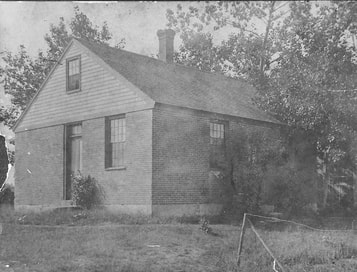 Acton has utilized many school buildings throughout its history, most of which are long-gone or unrecognizable. The most recent to disappear was the red brick schoolhouse on Harris Street that was torn down earlier this spring. We thought it an appropriate time to review the history of Acton’s school buildings. The Society has documents and maps that have tried to pinpoint the location of Acton’s early schools, the result of much work by local historians including James Fletcher, Horace Tuttle, Ida Hapgood Harris, Harold Phalen, Florence Merriam, Elizabeth Conant and others. In addition, Acton Memorial Library has made early town meeting records easily accessible online. But even with those resources, it is still a very confusing subject. Early schools were temporary and seasonal. Historical documents refer to people, structures, and areas that are unfamiliar today. (Where were “Deacon Brookses Squadron” and “Capt Haywards Corner”?) Seemingly logical labels (“north”, “southwest, “east”) referred to various divisions of town at different times. We have some payment records from early years, but it is not clear whether the payments to individuals “for schools” were for their own teaching and whether a school was actually kept on their own property. As time went on, schoolhouses were built, used for a time and then abandoned, moved or creatively reused. Town meeting records give us clues, but one has to be careful about making assumptions based on a favorable vote at a town meeting. Acton had a habit of voting on an issue and later voting to reconsider the same issue, sometimes multiple times. On school matters, there was a high probability that a vote would be overturned within the next few months or years. Stepping bravely (or foolishly) into the quagmire, we begin our survey of Acton’s schools. After a vote on March 3, 1739/40 not to “erect” schools, apparently the town voted to have a “reading, riteing and moveing Scool” in March 1740/41 (its funding was not clear). Acton’s public education was more definitely organized by a vote in December 1743 to divide the town into three parts, holding a school in each section. In the earliest years of Acton’s history, classes were held on private property by individuals who were willing to teach. Exactly how the students were accommodated was not specified in town reports. The individuals who kept the schools generally farmed, so presumably classes were held at times of the year when teachers and students were not needed for agricultural labor. As time went on, expenditures for a “schoolmaster” began to appear in town reports. Very early, the issue of equity arose; there had to be enough schools in town that all families had access to education for their children within a reasonable distance. The number of school districts, (sometimes known as societies or squadrons), was a recurring issue at town meetings. After the initial three districts in 1743, the number of divisions varied from four to seven. The first mention of town-owned school buildings appeared in town meeting records in 1771. On May 27, the town voted that Acton should have seven school houses in the center of each division of the town. Four had already been built privately and were to be purchased and repaired by the town. Three new Schoolhouses were to be built, “Eighteen feet in Length and Sixteen feet wide” but the districts could, at their own expense, upgrade them to twenty by eighteen feet. They apparently were to have four windows, plaster ceilings and at least partial plaster walls. Locating North Acton's Schools Starting our survey of Acton’s schools with the schoolhouse(s) in the vicinity of Harris street, we find that the 1771 list of proposed school locations did not include that area. There was already a schoolhouse near the Healds’ residence on present-day Carlisle Road and apparently another near Josiah Piper's on “Procter’s” Road (now Nagog Hill Road) that could have served families in the northern part of Acton. After some deliberation, on March 2, 1772, it was decided to leave the schoolhouse where it stood near Josiah Piper's. After the schoolhouse vote, complaints started and a series of re-votes followed. In particular, “Samuel Fitch and a Number of His Neighbours” thought themselves injured by being "to[o] Remote from Any School.” (March 1774). The town's response was that Mr. Fitch and his neighbors could have their school tax money to be used for alternative schooling. Existing town maps do not show the location of Samuel Fitch’s house in Acton, but we know from the Tuttle/Scarlett maps that at least some of the neighbors mentioned, (David Lamson and the widow Temple), lived in the Nagog Pond/North Acton area. (It was the same area that included John Oliver’s farm, the subject of another blog post.) On January 4, 1775, the town voted to build a schoolhouse “to accomidate Samuel Fitch and others.” One might think that was the end of the story, but on May 14, 1776, the town again voted that the Selectmen should build a School House in “Samuel Fitchs Society.” Probably based on that vote, Horace Tuttle’s 1890 map dated the first Harris Street North Acton schoolhouse at 1776. That may have been optimistic. On January 31, 1780, the town was again asked to vote on building the same schoolhouse and postponed the vote. In May, 1780, the town “voted that the Committe that was Imployed to Build a School House in mr Samuel Fitchs Society Do hire money in Behalf of the Town to Pay Said mr Samuel Fitch for what he has Don.” Clearly, Mr. Fitch had taken matters into his own hands. Unfortunately, the exact location and whether a schoolhouse was fully built at that point is not clear from the town meeting records. Around that time, the redistricting of families that were set off to the District of Carlisle necessitated another vote on the location of a schoolhouse, combining the families in the Fitch area with those who had been in Lieut. John Heald’s district (the “northest part of this town”, November 20, 1780). Money was voted toward building the schoolhouse at that time. The next period in which school buildings were discussed was the 1790s. On November 2, 1792, the town voted to reduce its school districts from seven to four. That was a short-lived plan. After proposals and counterproposals, on May 6, 1795, the town settled on five school districts and decided that “every Person Shall have the Liberty to Join the District to which he Chuses to belong and his Scholl [school] Rate Shall be expended in the School”. (Acton’s policy of school choice started early. It was also subject to many later votes.) Five schoolhouses were to be built including one “where the School House Stands near John Harris’.” This is the first direct mention that there had been a school near the location of the (later) brick school house. That was a welcome moment of clarity for us. It was temporary. In the 1796-1797 period, there were numerous town meetings in which the town was asked to reconsider, repeatedly, previous votes on school districts and schoolhouses. The warrant for the May 1796 meeting asked the town to “Reconsider all the votes that have been passed in the town meetings Respecting the Districting the town for Schools and building School houses for Seven years past” and in January 1797, the town was asked to reconsider all of their former votes on the issue. On May 1, 1797, the town voted not to fund the building of the five schools. Clearly, the decision-making process was not going well. In October 1797, a committee was formed to “fix a place for a School house north District”. Based on the voting chaos, it seems unlikely that a new school was actually built before the town’s school districts were consolidated around 1800. Town records discussed selling old school house(s) in the “east” part of town, and the Schoolhouse “near John Harris” was sold to David Barnard for $31.25 (Dec. 3, 1800). The neighboring residents were clearly not happy, because the town was asked to vote on building a schoolhouse in the Northwest part of town in December 1801. The town voted it down. According to town histories, for a period of about thirty years, the north and east districts were combined. There is no mention of a “North” school district in the records of those years and the sale of the schoolhouse indicates that the Harris Street site was not in use at the time. Instead, a schoolhouse was built approximately at the current intersection of Davis and Great Road. An 1830-1831 survey map shows a school at that location (and not at Harris Street). According to Ida Hapgood Harris’s 1937 school history, “Old residents relate that 80 pupils were there at one time. This was probably built around 1796.” (The document is at Jenks Library.) Leaving out occasional indecision during the early decades of the nineteenth century, on May 13, 1839, the town voted to split the “east” district again and build a brick schoolhouse in its "northern part" by November 1, 1840. Given the uncertainty of any vote being realized, we were dubious about claiming that the schoolhouse actually was built at that time. However, it must have been built then or soon thereafter, because in April 1844, the town voted that the North Acton district could put seats into their schoolhouse, as long as the town did not incur the expense. The residents must have refused to pay for the seating, because in April, 1845, the town provided $12 to “put seats into the North School house in the place of stools which are now broken”. (The students must have had an uncomfortable year.) By 1847, the town started printing the school committee’s annual reports, so we have a much more complete (and colorful) picture of what was going on with the schools after that time. From the 1849 report, we find that by then, the whole town had new schoolhouses. The school committee took a look back at the schoolhouses they replaced: “...now entirely vanished from our view – the old, square, four-roofed, one-storied, red school-houses.... with their little porticoes made to store wood and to trample clothes in... the strange and uncouth carvings, etchings and engravings which enriched them within and without. We remember too, the broken floors, the rickety and disfigured seats and benches, the blackened and dilapidated walls, and above all the ventilating apparatus, called windows. Yet they were cheerful places... But they have passed away, and other houses of a very different model stand in their stead.” Confirming that the brick school house had indeed been built, the committee wrote: “In the place of the old house on the great road are built two substantial and convenient brick houses, capable of accommodating fifty scholars each. They have good woodrooms and clothes rooms, and are furnished with black boards and Mitchell’s large map of the world; these last were purchased by subscriptions of the friends of progress in the district. These houses were built at a cost of $525 each, exclusive of the land and its preparation.” Despite the optimistic tone of the 1849 school committee, reading later town reports, one has to think that upkeep of the schoolhouses was a constant struggle. By 1851, the school committee was admonishing all of the school districts to attend to repairs so that “there is nothing to excite the evil propensities of the young destructives.” Vandalism seems to have been a perpetual problem. The 1858-1859 School Committee reported about the winter term: “Of this term for obvious reasons we shall say but little. (Sadly, that story is lost to history.) If the advancement in this, and preceding winter terms has fallen below the expectations of the parents, they should remember that such a miserable, dilapidated, cold, cheerless, uncomfortable and lonely old school house is not the place to look for anything remarkable. The pupils one day the past winter, found a large supply of shavings, in consequence of one of their number falling through a defective part of the floor. Occasionally the boys, out of school hours, amuse themselves by jumping from the floor and touching the ceiling, a feat that most of them can easily accomplish.... The location of the stove is such that [heat] is very unequally distributed.... Indeed the house may be comprehensively described as almost a perfect model of what a school house ought not to be." By the 1863-1864 report, we read: ”...we wish to speak of our school-houses; and in no very flattering term either. We know there are a plenty ready to say, they are good enough; what would be the use to build better ones, for the scholars to tear in pieces.... Why, they exclaim, “some of our school-houses have not been built comparatively but a short time, and just look at them.” That is what we say, LOOK at them, and carefully too; and we think you will come to the sage conclusion, that they are ill planned, poorly built, shammy things.... We do not believe the children and youth in this town are so much worse than they are in others; and we know they have large, convenient, and even ornamental school-houses in other towns, and they are kept well too. We believe if this town would build some good school-houses, convenient and well finished, that our scholars would take pride in keeping them so. We do not think it a good way to cultivate feelings of respect for public property, by having constantly before the eyes of our children defaced benches, dingy walls, and plastering hanging from the ceiling here and there, in a manner to tempt even those not inclined to mischief, to hit it a poke and tumble it down.... We think all should be as willing to be taxed to raise money to build good school-houses for their children to attend school in, as they would be to raise money to build a good town house to attend town meeting in, and we think if the town is able to have a town house worth some eight thousand dollars, it is able to have school-houses worth as much.” Ten years later, the town agreed that the brick building on Harris Street had reached the end of its useful life as a school. Charles I. Miller’s reminiscences of North Acton (at Jenks Library) stated that a wooden replacement was built during the fall and winter of 1873 while school was still being held in the old brick schoolhouse nearby. It was a time of change; the North Acton railroad depot had just been built at the end of Harris Street. At that time, only one house and barn were visible from the station, but the area soon grew. After the brick schoolhouse was taken out of service, it became a private dwelling. The wooden schoolhouse served for 26 years. The conflict between those who wanted schoolhouses close to home and those who wanted to achieve the efficiency of having larger, “graded” schools went on for decades. By the 1890s, small, ungraded schoolhouses were falling out of favor. It had become inefficient for one teacher to try to teach a broad range of subjects in one classroom that held up to seven grades’ students. The East district was merged into the Center school, but the North Acton district held out longer. Clearly frustrated, the Superintendent wrote in his 1897-1898 report that students in “out-lying districts” had:
a tendency to insubordination, which seemed to have its foundation in the idea that parental influence was paramount in all school matters pertaining to their district.... it prevails in out-lying districts generally, and is quite well developed at North Acton.” [page 59-60] Eventually, even the North Acton school was closed. In September 1899, its former students were transported to the Center school which then was divided into primary, intermediate and grammar “schools,” each with three grades apiece. The former North Acton teacher, the long-serving Ella Miller, came with them. The wooden school house at 52 Harris Street was sold off and became a dwelling. That piece of Acton school history still stands. 4/28/2016 Homework, 1915-StyleActon's 1915 report from Superintendent of Schools Frank Hill provides a fascinating glimpse into the concerns and the home-school relationship of that time period. He proposed (page 20) that awards be given for home work that would contribute to "the teaching of thrift, efficiency, art, hygiene, music" and "a more positive vocational guidance," giving credit for different aptitudes. His suggested plan included the following home work possibilities (Credits for each item given in parentheses):
Building fire in the morning (1) Milking cow (1) Currying a horse (2) Mending a chair (4) Making biscuits (2) Getting an entire meal (6) Wiping the dishes (3) Bathing (6) Washing, ironing and starching own school-clothes (20) Clean hands, face and nails (3) Retiring before 9 o’clock (1) Sleeping with window open (1) Later reports do not mention whether Superintendent Hill's plan was ever put into action. However, his 1917 report (page 13) showed that the home-school relationship seems to have been more of a divide than a collaboration: 'Good behavior’ is well and thoroughly taught in the schools of the town, but too often its practice begins and ends in the schoolroom.... The influence of the school day will never extend through the twenty-four-hour day until the public meets the teacher at the school door in the afternoon and says, ‘I will be as careful of the behavior of these children until they return to you in the morning as you have been today.’ This would be real cooperation and would be much appreciated by the schools. It is hard to imagine a superintendent in Acton today writing a similar report. |
Acton Historical Society
Discoveries, stories, and a few mysteries from our society's archives. CategoriesAll Acton Town History Arts Business & Industry Family History Items In Collection Military & Veteran Photographs Recreation & Clubs Schools |
Quick Links
|
Open Hours
Jenks Library:
Please contact us for an appointment or to ask your research questions. Hosmer House Museum: Open for special events. |
Contact
|
Copyright © 2024 Acton Historical Society, All Rights Reserved
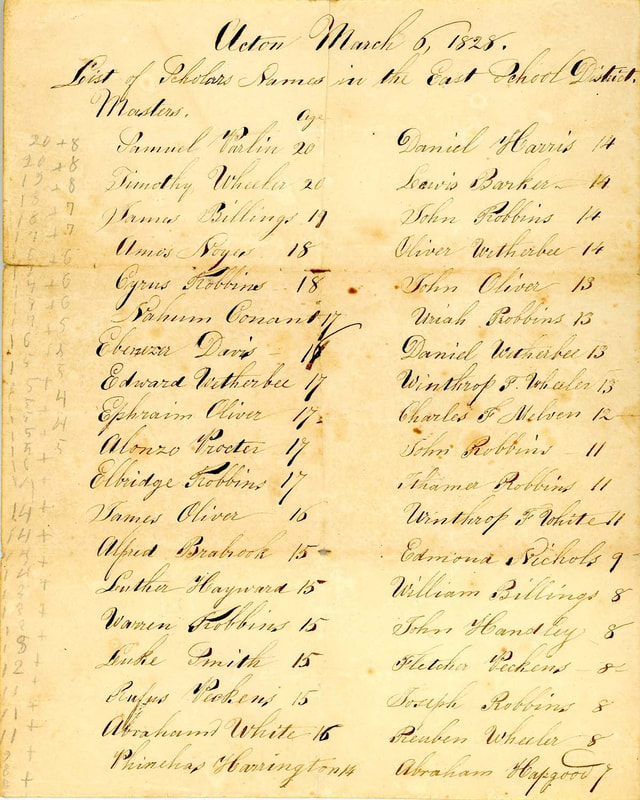
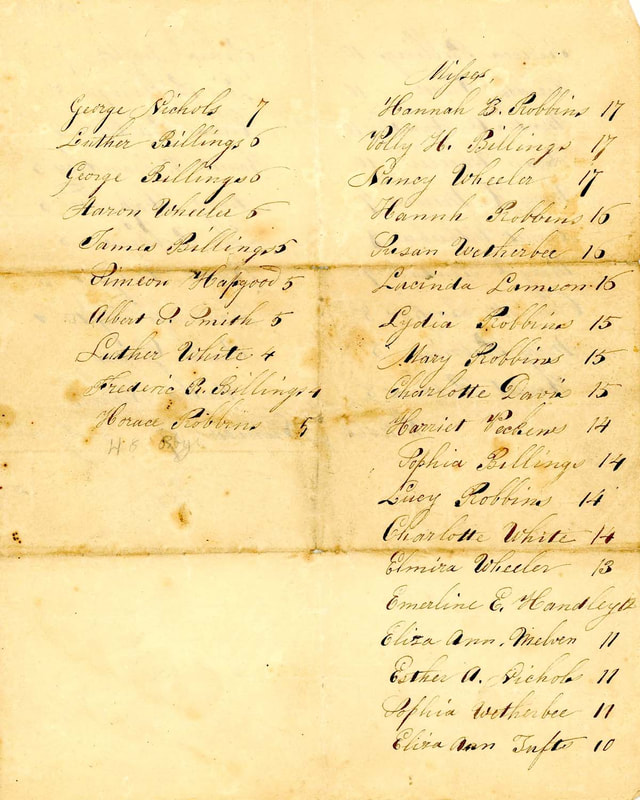
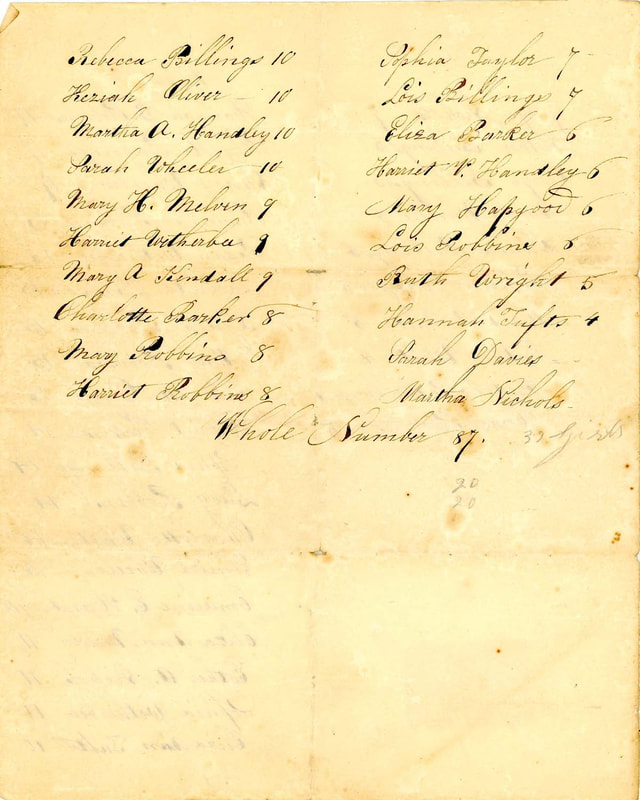
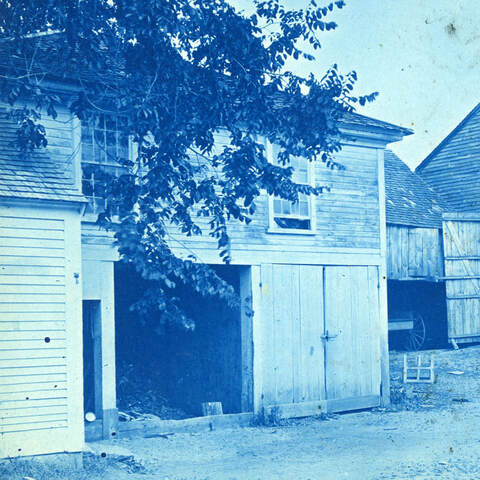
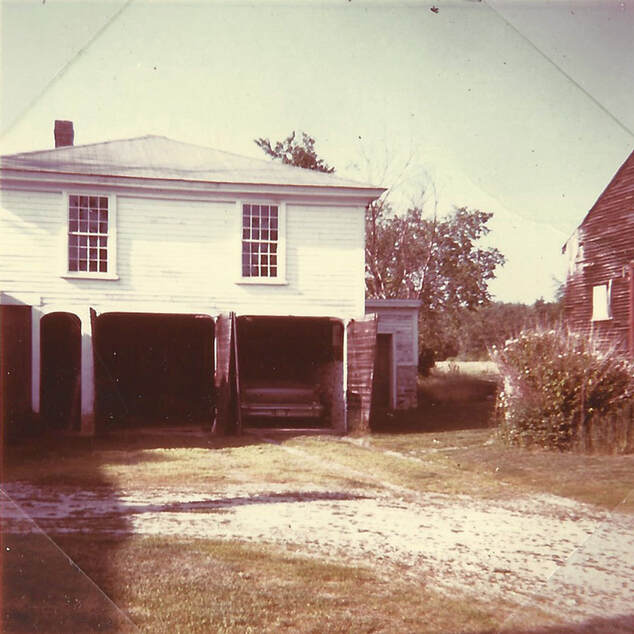
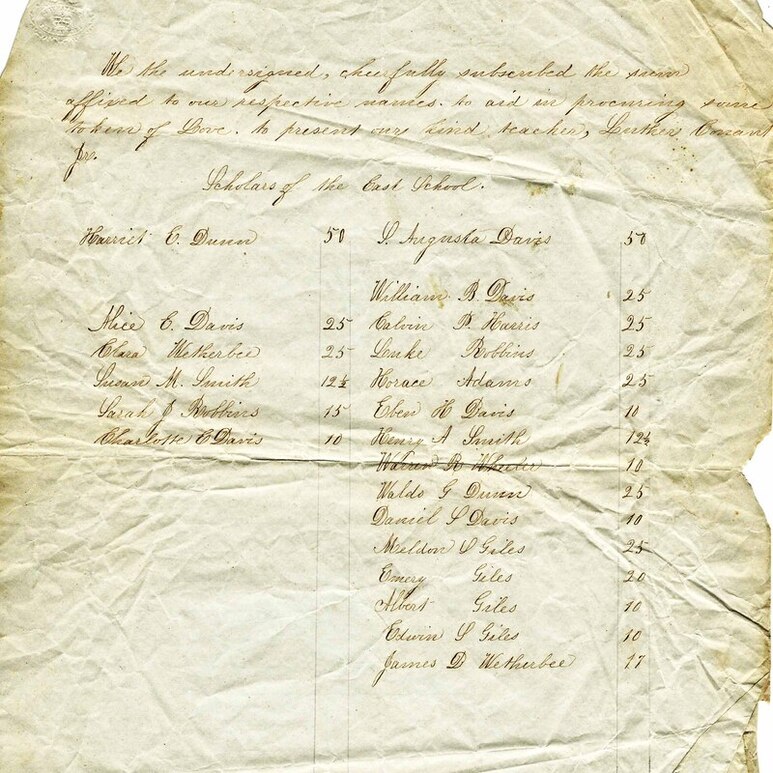

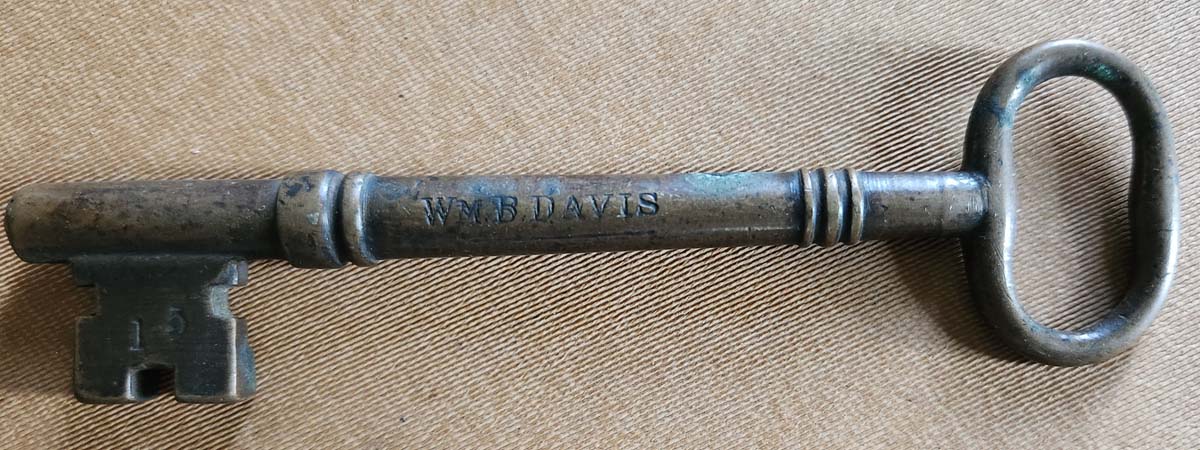
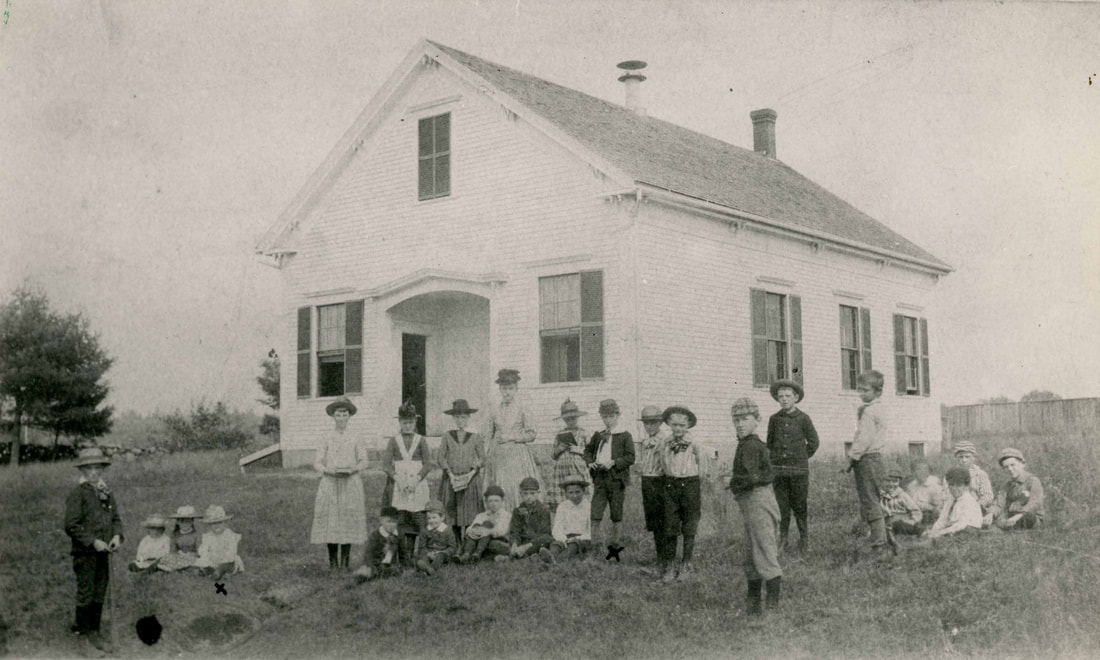
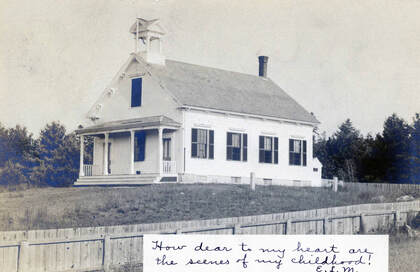
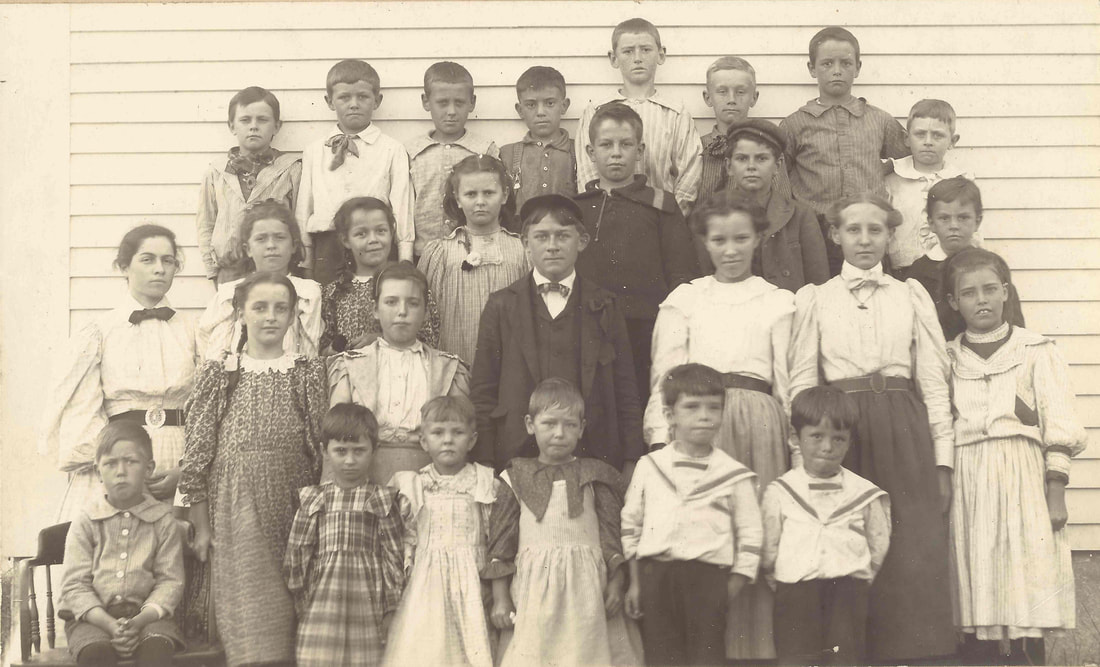
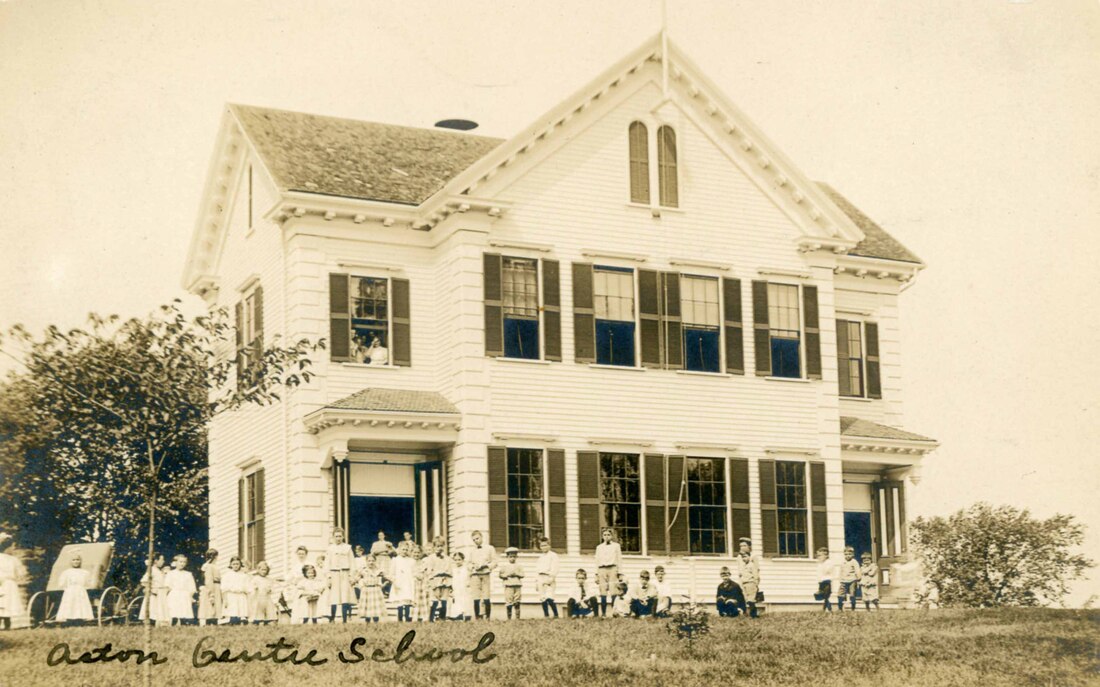
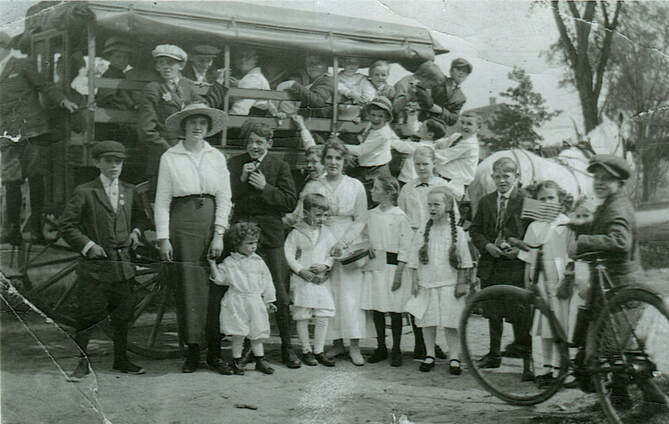
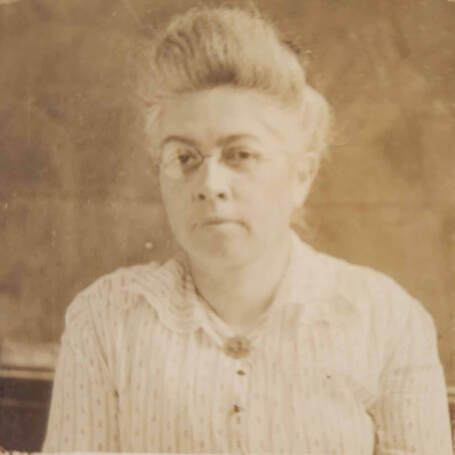
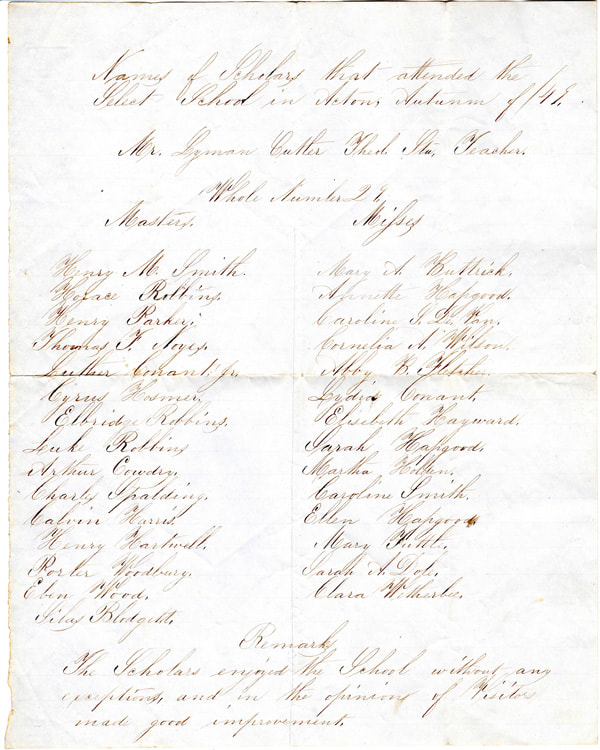
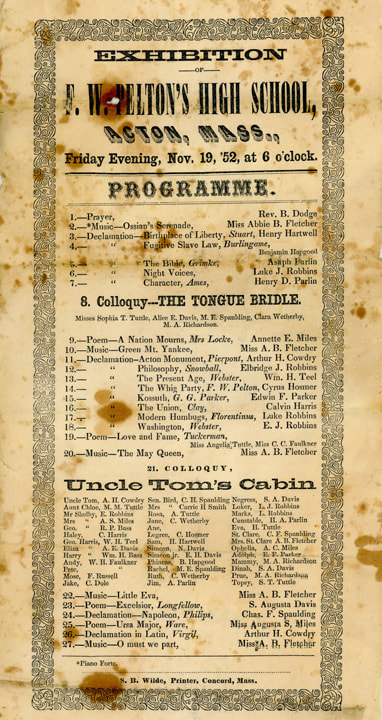
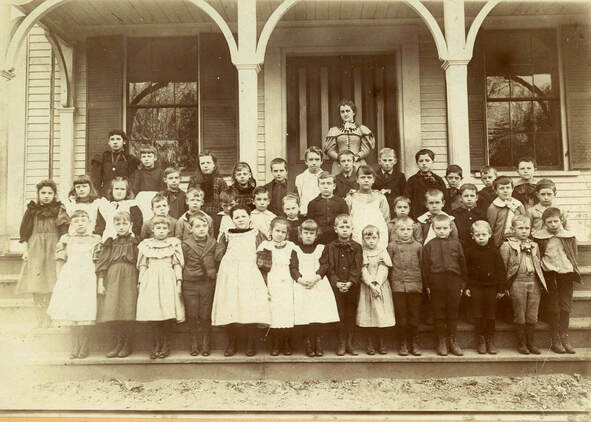
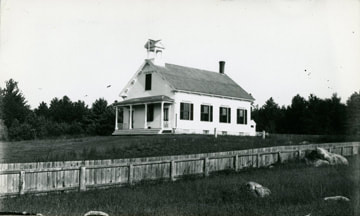
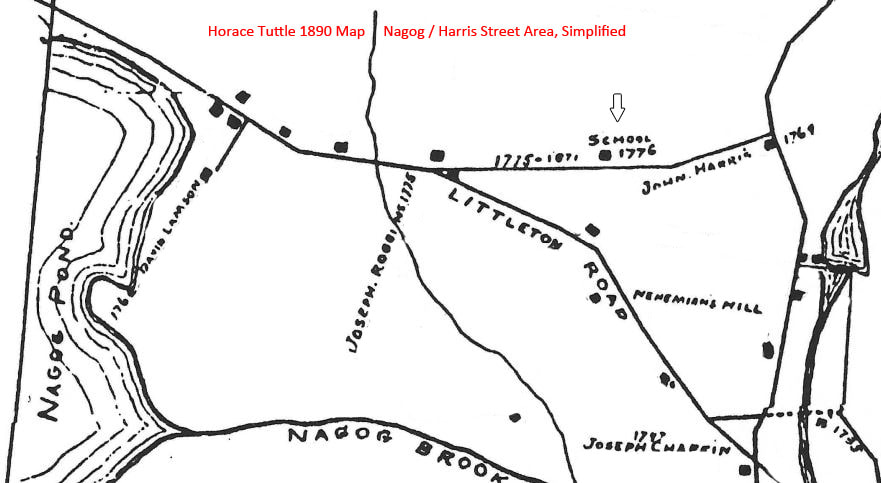
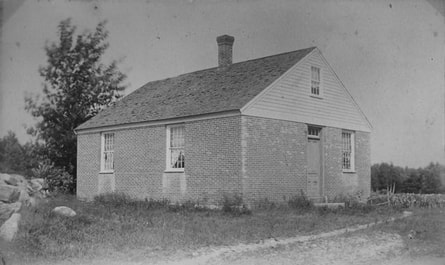
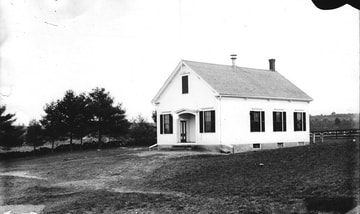
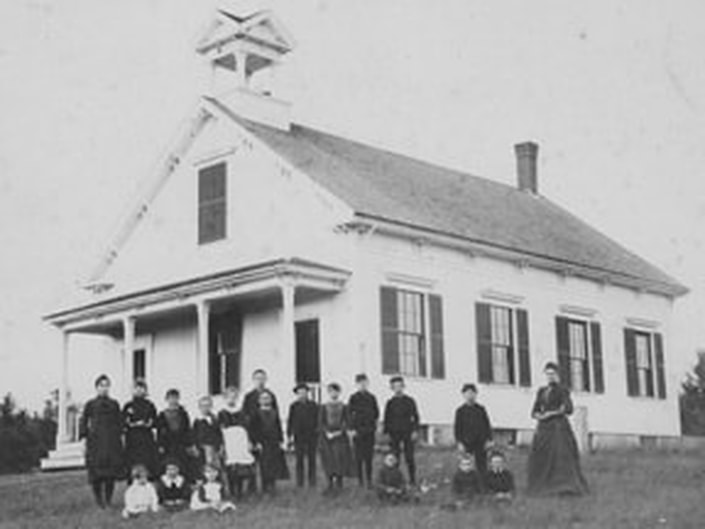
 RSS Feed
RSS Feed